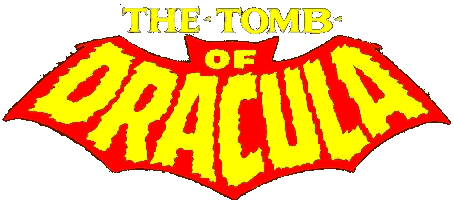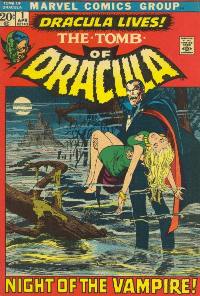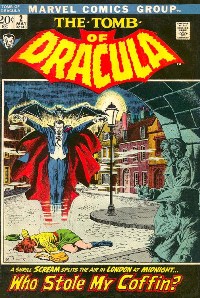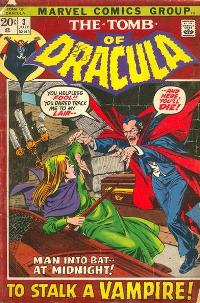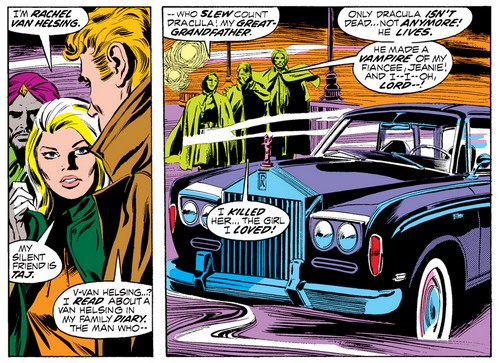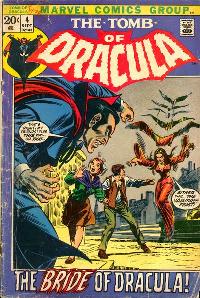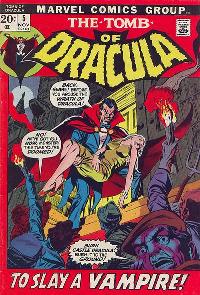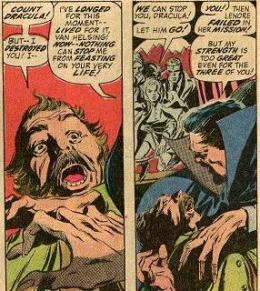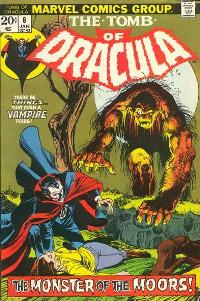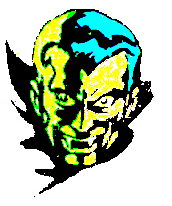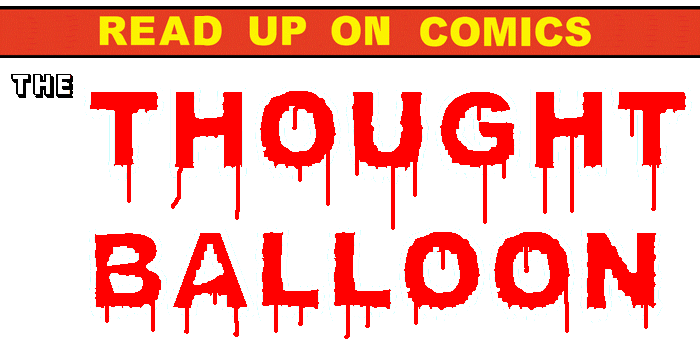| |
| Using Bram
Stoker's plot from the novel as part of the background
storyline, Roy Thomas and Gerry Conway kicked off the new
title with the reanimation of the vampire in modern
times, thus bringing the story and its cast up to date
(which, at the time, was 1972) and into a timeframe which
Marvel was much more familiar with than would have been
the case with the late 19th century. |
| |
| The link between the original
novel and Tomb of Dracula was forged by
introducing the last living descendant of
Dracula, an American named Frank Drake.
Formerly a
millionaire but now virtually broke, Drake
ventures to Transylvania together with his
fiancee Jeanie and long-time friend Clifton
Graves after learning that he is in fact a
descendant of the legendary Count Dracula and
thus the inheritor and rightful owner of the
ancestral castle. Drake, along with his
companions, plans to make a fortune by
refurbishing the alleged vampire count's estate
and opening it as a tourist attraction.
|
|
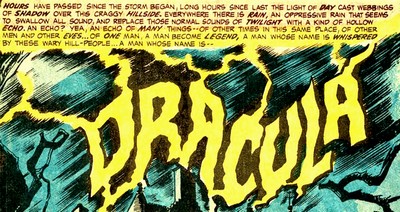 |
|
| |
| However,
Graves plans to lure his somewhat naive companion into
the castle and then dispose of him, leaving himself in
sole possession of the lucrative business of running the
castle. Things quickly start to go anything but the way
they were planned once the trio actually reaches Castle
Dracula. |
| |
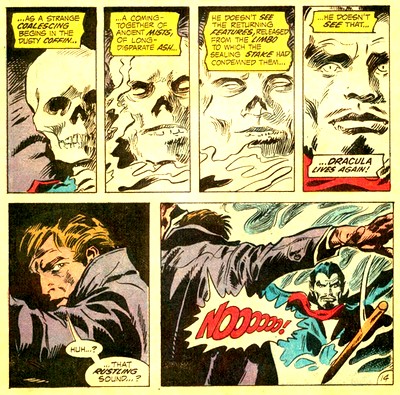 |
|
Separated from the
others, Graves falls through a rotting
floorboard and finds himself in an
underground chamber, face to face with a
coffin containing a dust-covered skeleton
with a wooden stake protruding from
between its ribs. Graves mocks the
superstitious locals - who undoubtedly
desecrated the grave of their former lord
- by removing the stake and casting it
aside. To his great shock and horror, he
is quickly forced to acknowledge that, in
the damp darkness of the tomb, Dracula
has risen again...
Emptying
his gun at the count, Graves is also
forced to acknowledge that Dracula is
immune to common weapons as he his
helplessly thrown into a pit - to be
visited by the count at a later point in
time, for Dracula hears the voices of
Frank Drake and Jeanie.
Casting a hypnotic
spell on Drake's fiancee, he calls her
unto him but is stopped in his tracks at
the very last moment by Drake who
remembers the old tales about vampires
and points an item made of silver at
Dracula, thus preventing him from
approaching them.
|
|
|
| |
| However,
the enraged count finds easy prey in the nearby village
as the curse of the vampire once again lives around
Castle Dracula. As the locals quickly grasp the new
situation they turn out in crowds and march towards
Castle Dracula, where Drake faces off Dracula once more.
This time, however, he is unable to prevent the count
from attackng Jeanie. |
| |
| As the people from the
village set fire to the castle, Drake appears
with the seemingly lifeless body of his fiancee,
and as the old and cursed walls are burnt to the
ground, Drake mourns the death of Jeanie - who
all of a sudden seems to come back to life...
however, only to tell Drake that she too, like
the count, is now an undead creature of the
night.
Drake realizes his true loss,
and at the same time has a first premonition of
even more terrible things about to happen...
|
|
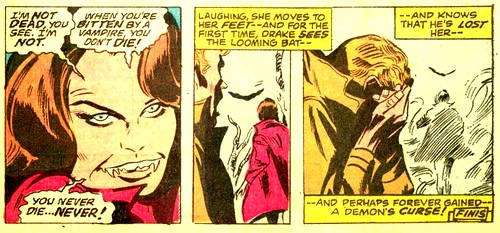 |
|
| |
|
Tomb of
Dracula #1 (the extension to the vampire count's
name was necessary for Marvel to be able to copyright the
title) provided the new ongoing series with a fast-paced
and well told initial storyline which tied rather well
with Bram Stoker's original story as the existence of
this literary work is not ignored or denied (as could
well have been the case - none of the Universal or Hammer
Dracula movies makes any reference to Stoker's novel at
all within their storylines) but rather portrayed as a
grand misconception: Stoker's book is not, as everybody
thinks, a work of fiction, but rather an account of
actual events. This - fairly intriguing - approach was in
fact hinged on the standard logic of the Marvel Universe:
if a well known fictional character appears in a Marvel
comic book, then this character is no longer considered
to be fictional, but rather a real entity - in which case
any fictional work on said character must be a form of
factual eye witness report. This way of handling the
likes of Dracula or the
Frankenstein Monster
has its
roots in Stan Lee's very early conception that Marvel
comic books about superheroes were to be perceived as
being published in a New York City which was populated by
these very same superheroes.
For Tomb
of Dracula, the true quality and potential of this
approach would unfold as of issue #3.
|
| |


